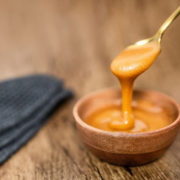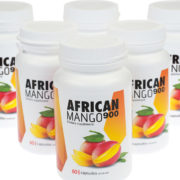It’s safe to say that ecology and environmental awareness has during the last few years become a real trend in global urban cultures. The vast majority of those trends, however, reach people from large urban areas – most of them are well-educated and tend to consider the balance of the natural environment whenever they choose a product. People that don’t live in big cities, on the other hand, might rarely employ proper behaviors that ensure our planet’s safety.
The truth is, if a certain fashion is strong enough, it has the potential to spread over the whole population. Will this happen in the case of environmental awareness? Let’s hope it will – human actions can sometimes have disastrous effects on nature. Some of the problems created by our civilization can be easily solved – it’s astounding that nobody has ever been interested in doing so, least of all the large multinational corporations that focus on their revenues instead of the cleanliness of the air, water or the density of forestation. That is why, when choosing cosmetics for every day use, we should always check how their production impacted natural environment. Maybe it’s not that obvious, but using cosmetics can be just as damaging to nature as throwing out plastic bottles in a forest.
The Dangers of Cosmetic Peelings
Human civilization has a long tradition of littering the surface of the planet, most importantly with plastic waste, which is not biodegradable and needs hundreds, if not thousands, years to decompose. Scientists have been warning us about this issue for a very long time now and we have adopted a wide range of behaviors that minimize the impact of plastic waste on nature: we carry reusable linen bags to do our shopping, segregate our garbage and avoid buying products packed in dozens of plastic containers or bags. Nevertheless, not everyone is aware of the fact that every time we exfoliate our skin with a conventional peeling gel, we contaminate our groundwater and, in consequence, the waters of our seas and oceans.
How is that possible? Think about why you like to use peelings on your body and face – by gently rubbing the gel filled with polyester micro granules, you get rid of the old epidermis and allow your skin to better absorb whatever cream, conditioner or face mask you apply later. We all like our skin smooth and soft, but this comes at a price – all those miniscule pieces of plastic end up in the sewage. Of course, all the waste water is filtered at treatment plants, but the technology used in cleaning it is not adapted to detect pieces of garbage as small as the micro granules of your favorite peeling. Those miniscules pieces of plastic then travel to our seas and oceans, nowadays forming a new kind of plastic continent that stretches across the Pacific Ocean.
As a consumer of cosmetic products, you have a say in what will go down the drain. It’s worth to rethink your beauty strategy and choose eco cosmetics or vegan cosmetics (Vegane kosmetik), such as peelings that are based on natural substances, such as sugar or ground nut shells, which are easily biodegradable.
Parabens and Their Impact on Nature
We find parabens in practically all the conventional cosmetics on the market – it’s a very popular preservative agent, most likely because of its low price. In recent years, parabens have become highly controversial in relation to their impact on our health – some of them are suspected to have a carcinogenic effect, others have actually been proven to cause strong allergies and skin diseases.
What’s particularly scary about parabens is the fact that they are found literally everywhere – a recent study has detected them in the urine of 90% of population all over the globe, including people who live in developing countries and have no direct access to the conventional cosmetics produced by large corporations. Such a spread of parabens is definitely unnerving, especially when we consider the fact that those kinds of substances can impact the hormonal systems of all living creatures, including humans.
But what exactly is the influence of parabens on nature? This issue has not been solved yet – what we need is a specialized targeted research line that would uncover the life of parabens after they enter our ecosystems. The prognosis is hardly optimistic though – that is why suing natural cosmetics can provide a way of reducing the amount of parabens found in nature.
The Dark Side of Cosmetic Production
One of the biggest dangers of globalization is the ability of large corporations to move their production lines to countries that guarantee cheap labor force and low costs of storing – most notably China and other countries located in south-east Asia. It might sound crazy, but for those companies it’s less expensive to produce their products far away in Asia and then transport them to Europe and America, rather than produce them closer to where their consumers live.
Economy has hardly ever went in accordance with ecology, and this time is no different. Large amalgamations of factories belonging to pharmaceutical, cosmetic and chemical industries in China result in ecological disasters noted in many regions of this vast country. The subsequent transportation of goods and intermediate products to Europe only adds to this contamination as the fumes enter the atmosphere and poison the clean air.
The Answer Lies in Nature
That is why some companies have decided against outsourcing their production lines and this goes especially for the producers of eco cosmetics that don’t want their brands to be associated with the growing contamination of other countries. Beauty products that are really eco-friendly should be enclosed in ecological packaging, which not only gives proof to the brand’s environmental awareness, but also reduces the amount of waste produced by our societies. Do we really need those lengthy paper brochures that accompany our cosmetics, or unnecessary additional paper containers?
Someone who really cares about nature will always buy products that were designed with the reduction of packaging in mind. The most important information can be placed on bottles or tubes that contain the cosmetic, and direct the consumer to the company website for additional information.
The popularity of ecological cosmetics is growing every year – more and more people decide to buy beauty products devoid of silicons, parabens, synthetic micro granules or unnecessary packaging, all produced locally with a reduced emission of contamination.
Let’s hope that consumers won’t be the only ones to follow this trend in the future – large cosmetic corporations should notice this growing fashion and adopt its principles as a basis on which they build their production and distribution strategies. Merchandising beauty products in an eco-friendly way should be a standard adopted not only for expensive cosmetics, but also regular beauty products used daily by average consumers.














